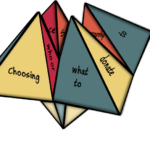Everyday people, everyday deaths

You may not have read it in the newspapers this morning, nor on social media, but 421 Australians died yesterday. And the day before. And most likely today too. Roughly speaking of course, averaging out the 153,580 who died over the course of 2014¹. (Coincidentally, 153,000 is roughly how many people die worldwide per day².)
The media may focus on the half a person murdered per day, or the 3.8 people tragically killed on the roads, but to use a common idiom, the majority of people who died in 2014 (55%) ‘had a good innings’. (A good innings, in my eyes, equates to living past 80.) But this has not long been the case. Until 2005 less than half of Australians who died each year reached 80. In fact, the percentage of people who died before reaching 80 was 44% in 2000, 34% in 1990, and 29% in 1980³.
The graph below shows the percentage of deaths by age group, since 1910.
The gains achieved over the past 115 years are huge. Much of the improvement, in particular in the first half of the century, was a result of decreased infant (under 1) and child (1 to 4 years) mortality. Infant deaths decreased from 81 deaths per 1,000 live births in 1910 to 25 per 1,000 in 1950, to just 3 in 2014 [4].
The improvements over the last 50 years, however, have also been driven by decreased rates of death in older Australians. This, in no small part, is a result of the improved ways in which we deal with heart disease. Heart disease is “the largest single cause of death in Australia” [5], but if current trends continue it won’t be for long. While heart disease (ICD-10 I20–I25) accounted for 30% of all deaths in 1970, by 2014 this had decreased to 13%.
Over the past 18 years heart attacks (which account for about half of all heart disease deaths) have dropped from 13% of all deaths to 6%. Dementia on the other hand, has increased from 1% to 5%. The changes have been so pronounced that dementia now kills more women than heart attacks do.

Since 1997, the number of heart disease deaths has reduced by an average of 505 people per year. That’s twice the average number of murder victims per year (which itself is decreasing).
Society is not getting more violent, or more dangerous. But improvements in the way we treat health conditions have dramatically improved and extended our lives.
If the amount of attention on scientific and medical improvements, as well as sensationalised but unlikely scenarios, more accurately reflected reality, perhaps we would have a very different perception of our state of affairs.
Shit’s getting better. Way better.
_
To better understand what people die of these days, the Death Tree Map linked here shows all Deaths in Australia in 2014 by cause. Clicking each category drills into finer categories in greater detail (i.e. Cancer breaks down into Lung cancer, colon cancer, breast cancer, etc.). Right clicking drills up.
The colour represents the sex divide. The bluer boxes represent diseases which kill men more than women. The yellow boxes kill more women than men. The legend on the top right guides the sex representation.
(below is a smaller representation of the Death Tree Map)
[1]http://www.who.int/mediacentre/factsheets/fs310/en/index2.html[2]http://www.abs.gov.au/AUSSTATS/abs@.nsf/Lookup/3302.0Main+Features12014?OpenDocument[3]http://www.aihw.gov.au/deaths/grim-books/[4]http://www.abs.gov.au/ausstats/abs@.nsf/0/C6A9CBD96E6BA43DCA257943000CEDF5?opendocument[5] http://www.aihw.gov.au/WorkArea/DownloadAsset.aspx?id=60129547044
















